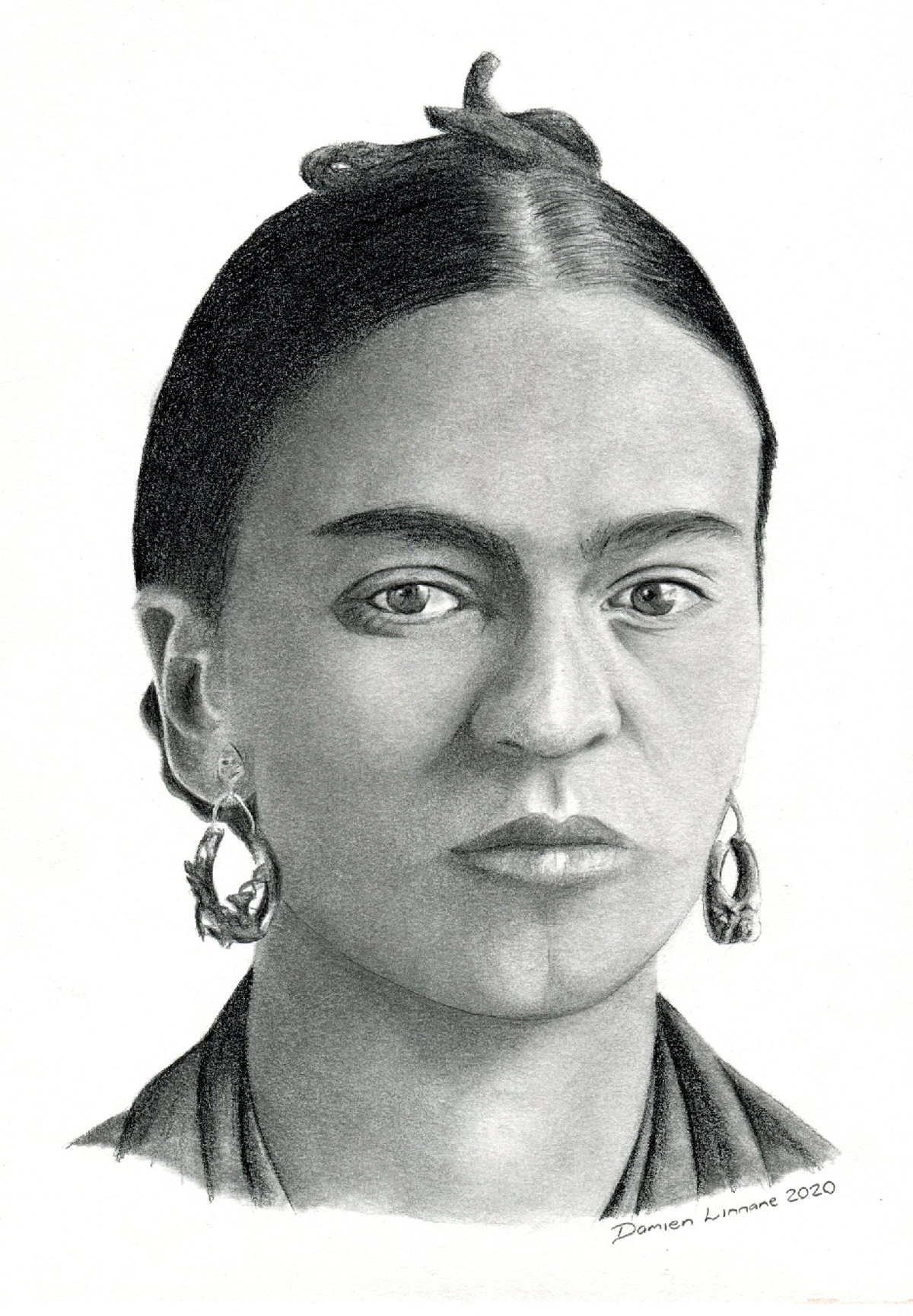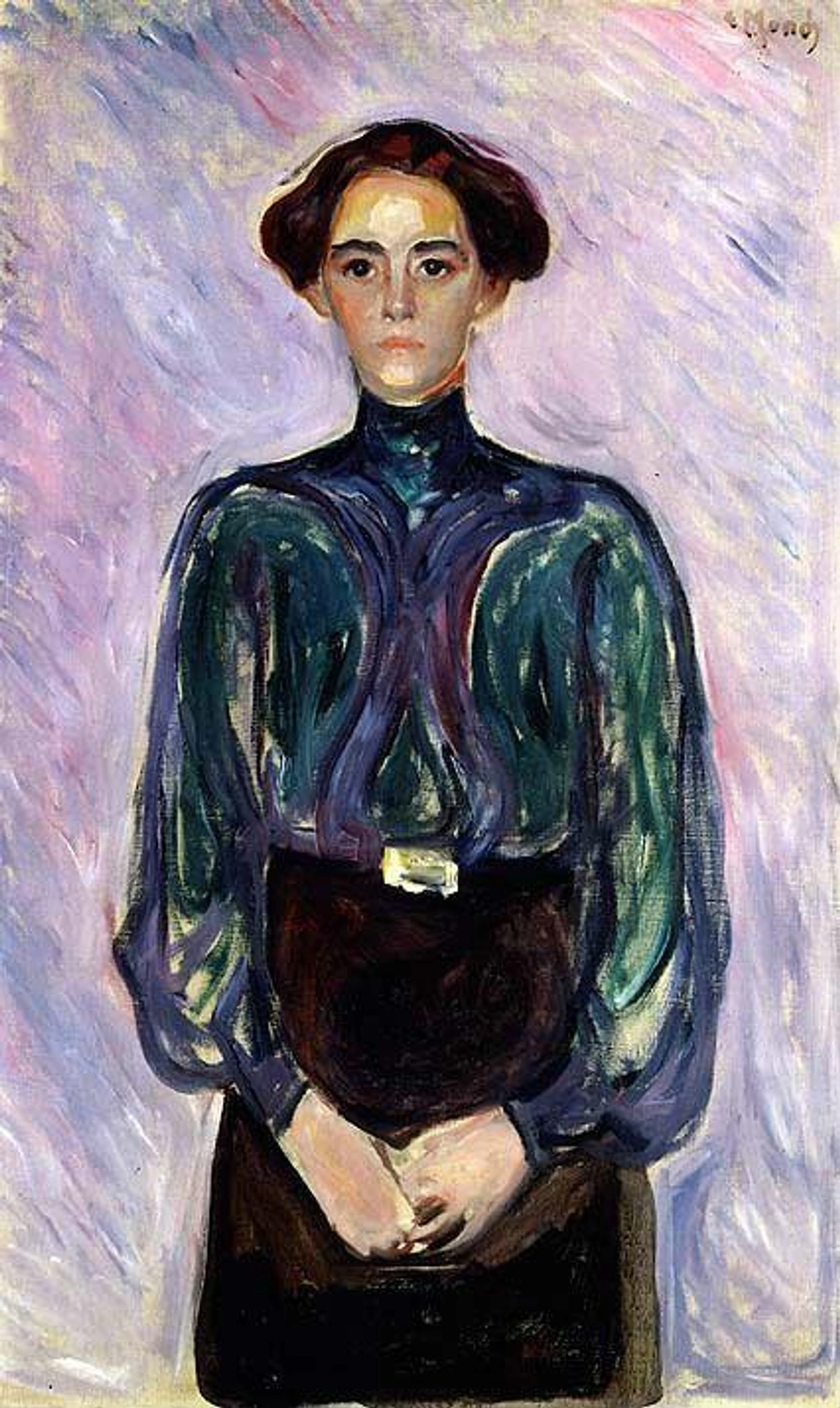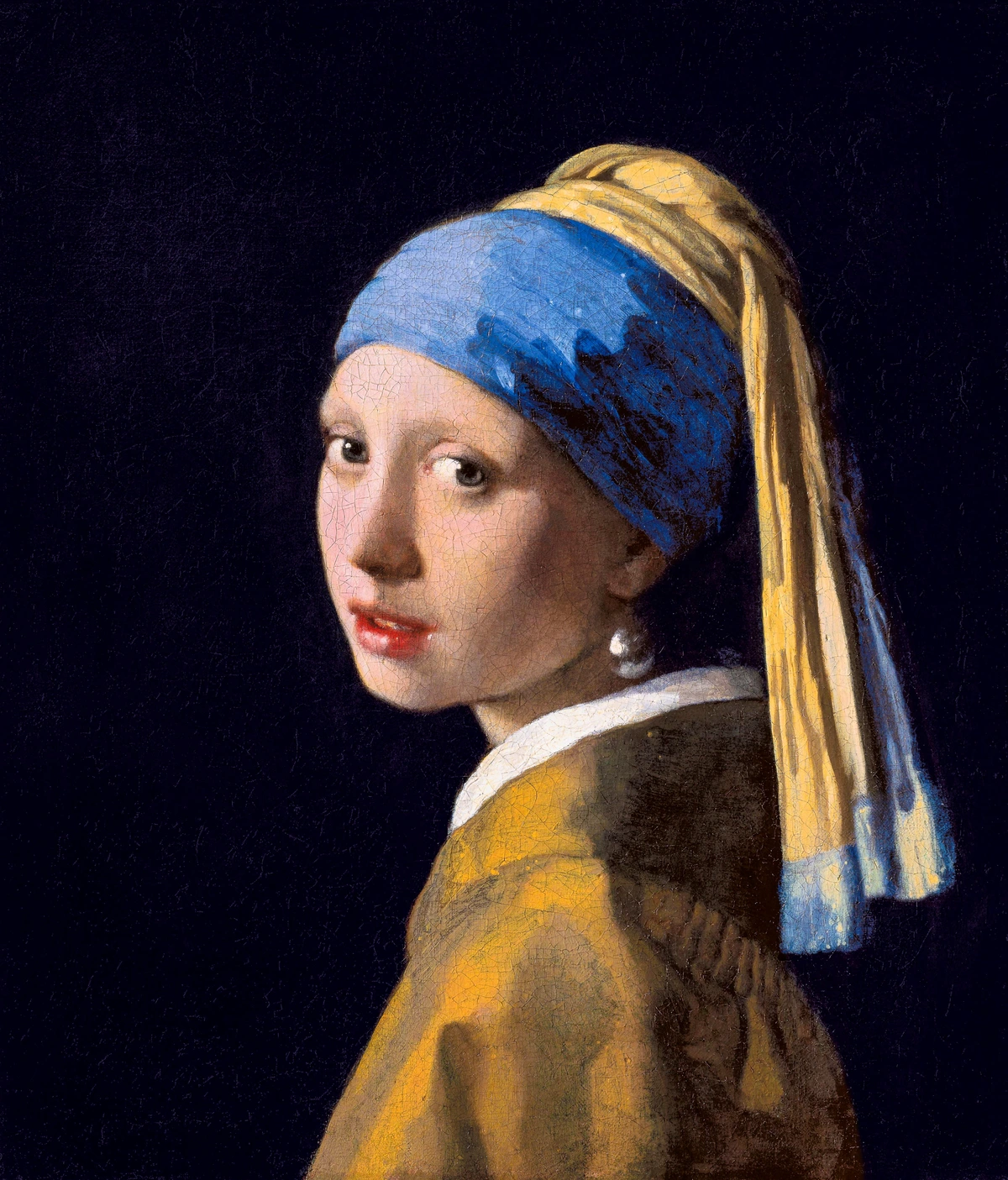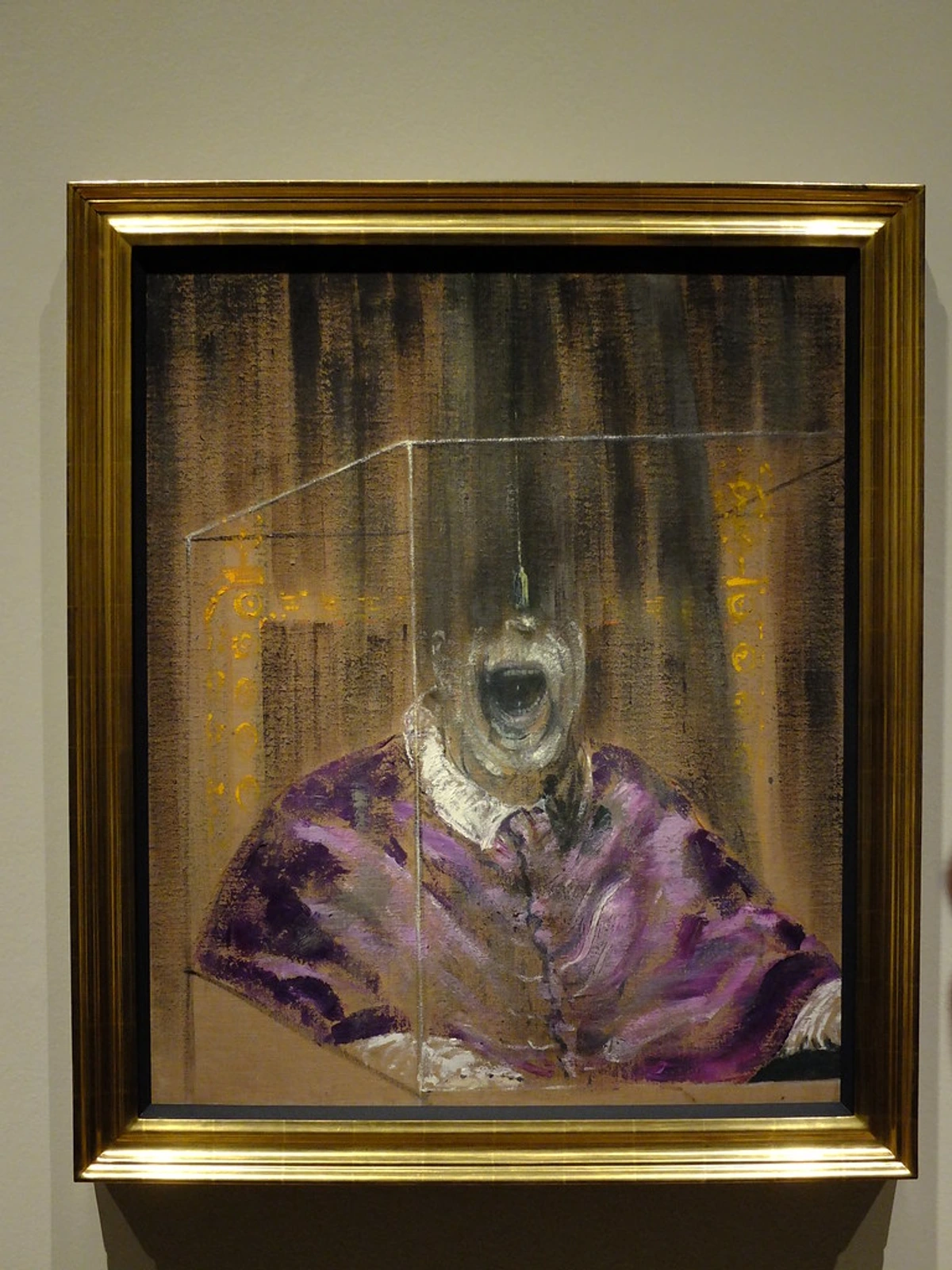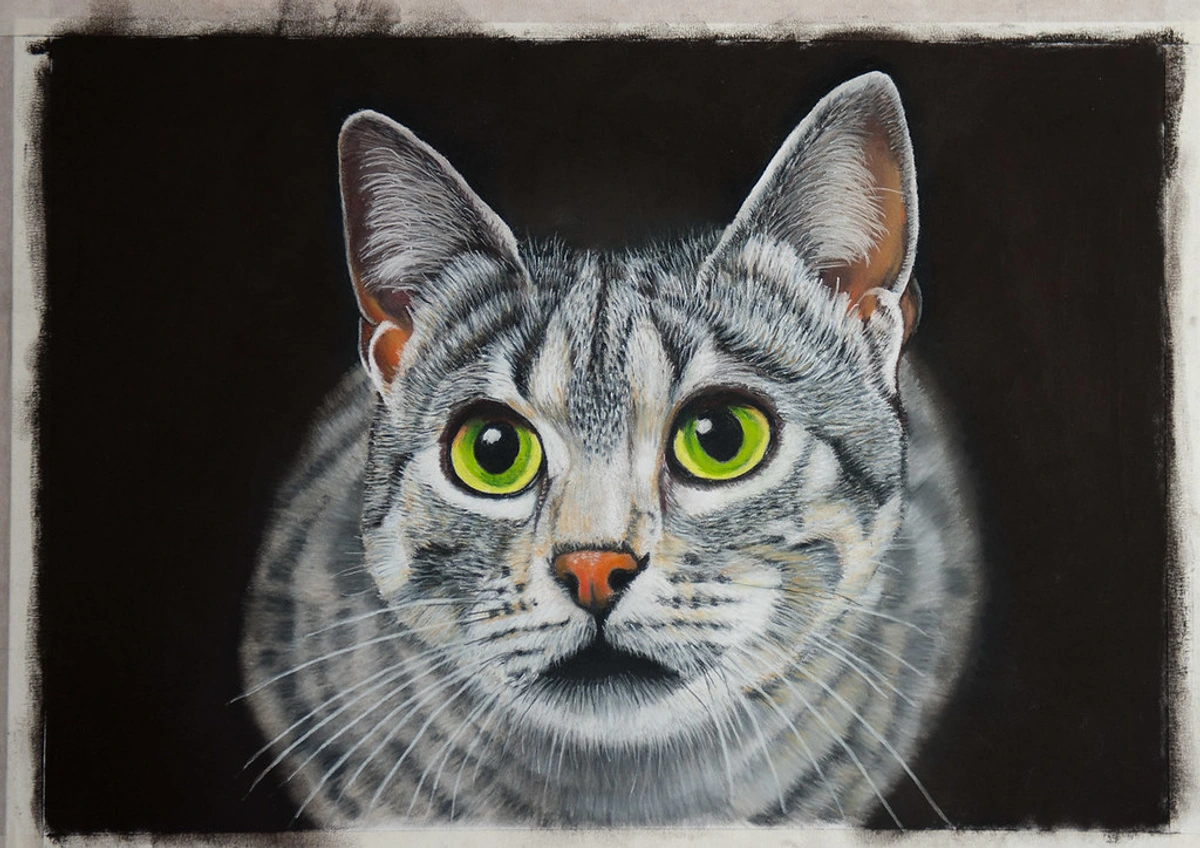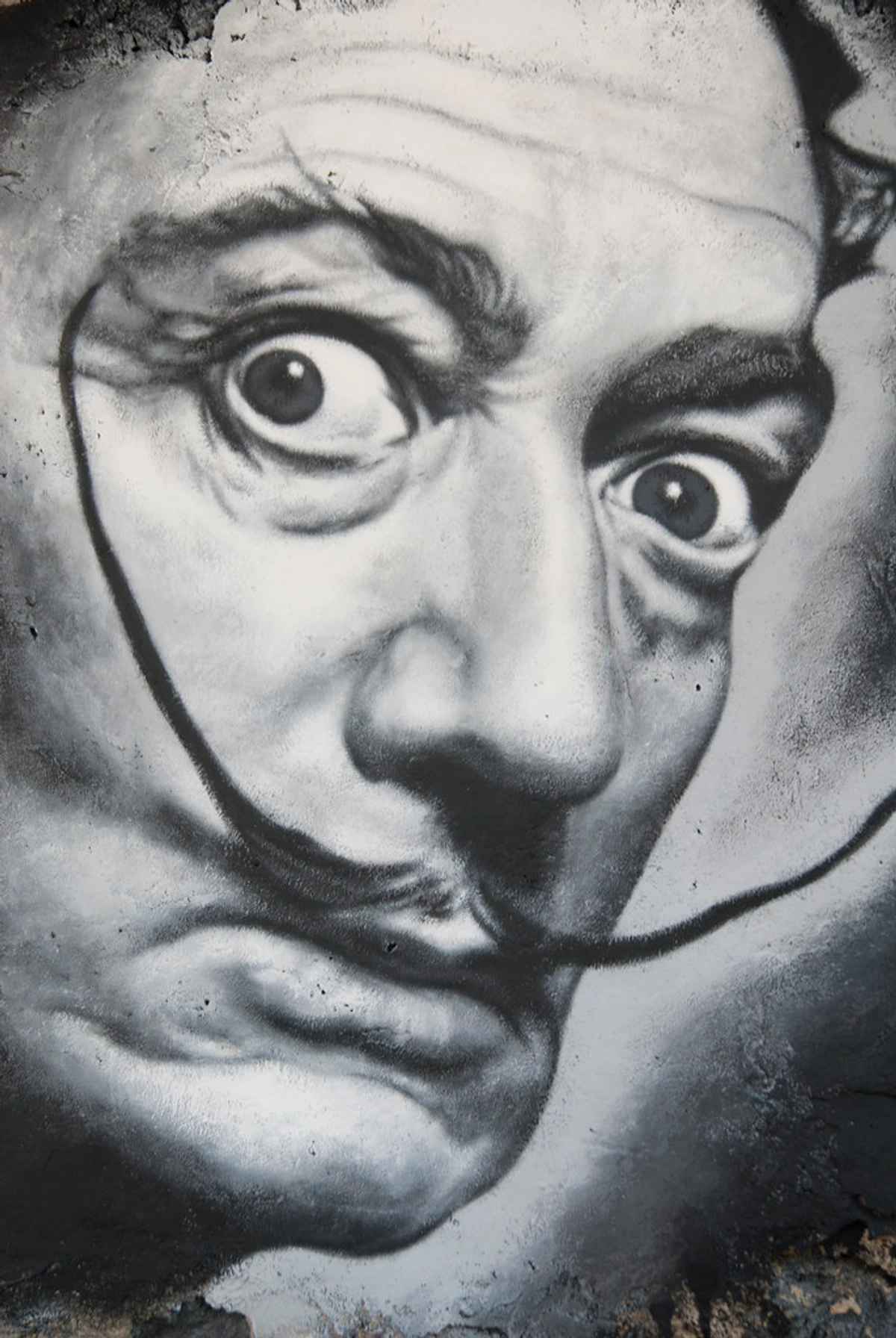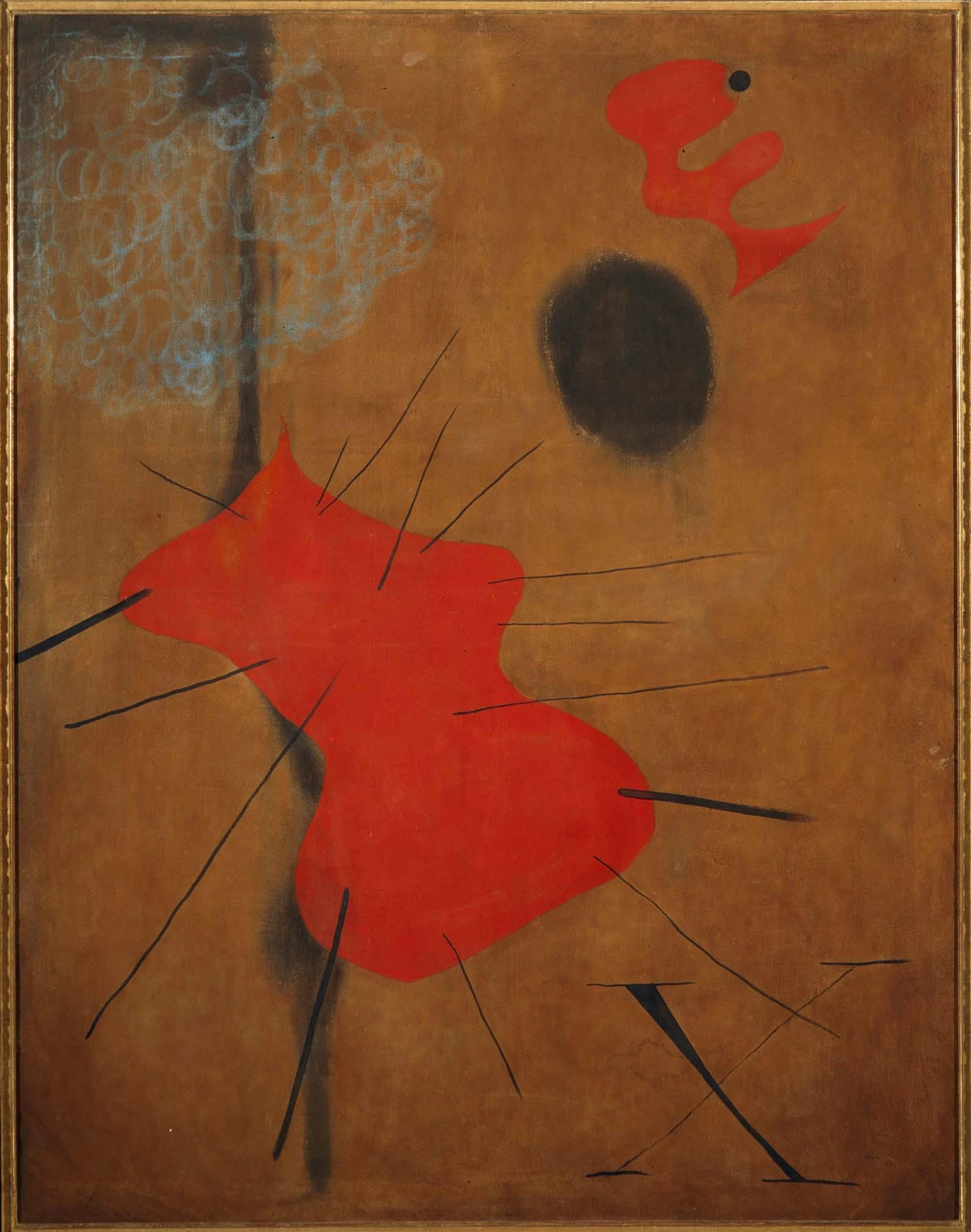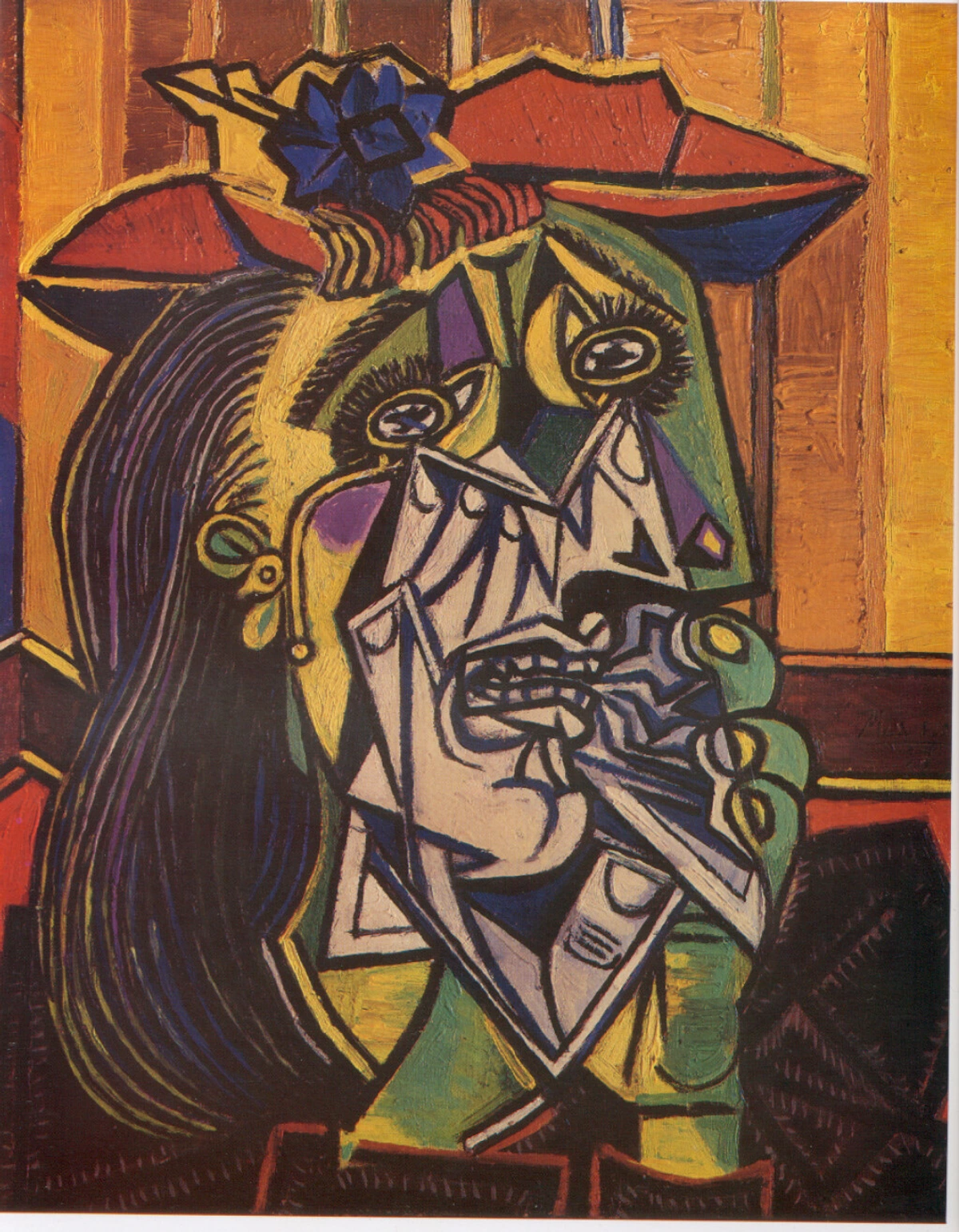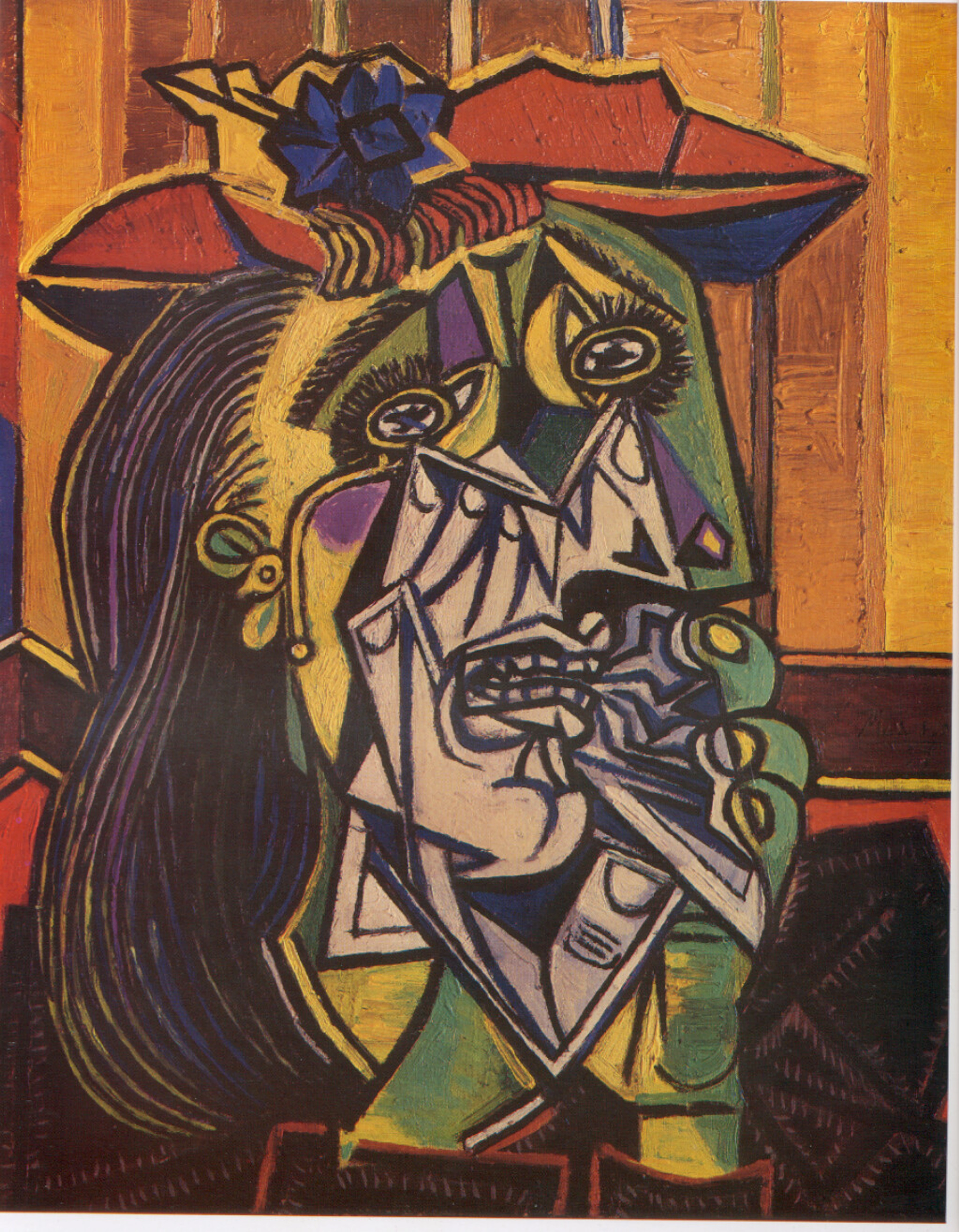
What is The Girl with a Pearl Earring? A Deep Dive into Vermeer's Masterpiece
Join me on a personal journey to uncover the secrets of Johannes Vermeer's iconic 'Girl with a Pearl Earring.' Dive into its mystery, history, and why this Dutch Golden Age masterpiece continues to captivate hearts worldwide.
The Girl with a Pearl Earring: A Deep Dive into Vermeer's Masterpiece – Unraveling its Mystery and Enduring Allure
Some artworks just… resonate, don't they? They move beyond mere pigment and canvas to become a living presence in our collective consciousness. For me, The Girl with a Pearl Earring is absolutely one of those rare, transcendent pieces. I still vividly recall the first time I truly saw it – not just a fleeting image in a book, but the full, captivating force of it in person at the Mauritshuis. It grabs you, pulling you into a quiet intensity, a moment frozen in time that makes you lean in, hoping to catch a secret she might be about to whisper. It's more than just a painting; it’s an encounter, a silent conversation across centuries that somehow feels intensely personal. Every time I encounter her, whether in reproduction or, ideally, in person at The Hague, I'm drawn into her magnetic field, searching for something new, something untold, a deeper understanding of Johannes Vermeer's enigmatic genius.
But what is it about this single canvas, created centuries ago by a Dutch master, that continues to hold such a profound grip on our imagination? Is it the shimmering pearl, the enigmatic gaze, the exotic turban, or simply the sheer artistry that brings her to life? As an artist myself, deeply engrossed in the dance of color and light, I find myself drawn to the intricate layers of mystery and mastery that make this piece not just famous, but truly iconic. This isn't just about art history; it's about the enduring power of human connection, the questions that linger, and the universal emotions it evokes. This article aims to be the definitive guide to The Girl with a Pearl Earring, peeling back those layers to dive deep into what makes Vermeer's masterpiece so utterly unforgettable, why it continues to captivate millions worldwide, and why, centuries later, its quiet allure still feels intensely relevant to us today. We'll explore its origins, the artist, its visual elements, the enduring scholarly debates, and its surprising journey into modern popular culture.
Who is She, Anyway?
That's the million-dollar question, isn't it? For me, the mystery is a huge part of its allure. Unlike many formal portraits of the era, we don't know her name. Is she a real person, a model, a servant in Johannes Vermeer's household? Or is she an ideal, a vision brought to life on canvas? This anonymity only deepens the fascination, inviting each viewer to project their own narratives onto her, much like we do with figures in a compelling novel. Art historians, bless their diligent hearts, have pondered this for ages, and the prevailing theory is that she's a tronie, a concept that, once understood, only heightens the painting's artistic brilliance.
Now, a tronie (it’s a cool word, and an important one for understanding this piece, so I'm bolding it again!) isn't a portrait in the traditional sense, where the primary goal is to depict a specific, identifiable person. Instead, it’s a study of a face, an expression, or a character type – a kind of artistic exploration. Think of it as an actor's headshot, but for a character, not the actor themselves. It’s an exercise where the painter explores human emotion, a particular costume, or the play of light without the constraints of a client's specific demands. In the bustling art market of the Dutch Golden Age, tronies were a clever artistic and commercial strategy. They allowed artists like Vermeer to hone their skills, experiment with challenging poses or exotic clothing, and create captivating works that appealed to collectors without the need for a specific commission. Vermeer, our elusive master, was quite fond of these character studies, creating figures like The Girl with the Red Hat and Study of a Young Woman that share a similar anonymous, yet captivating, quality. These weren't about flattering a wealthy patron; they were pure artistic exploration, a chance to play with light, fabric, and fleeting expressions. The tronie allowed artists like Vermeer to focus purely on aesthetic concerns, pushing the boundaries of their craft and creating timeless images that captured the essence of a 'type.' So, in a way, she's everyone and no one, which I think only deepens her enigmatic appeal. It's a testament to the power of a character study that it can transcend individual identity and speak to universal human experience. If you’re curious about the broader world of facial representation in art, exploring the nuances of portraiture can offer a fascinating journey.
Other Notable Tronies and Character Studies by Vermeer
Title | Estimated Date | Description | Key Features |
|---|---|---|---|
| The Girl with a Red Hat | c. 1665-1666 | A young woman wearing an extravagant red hat, looking directly at the viewer. | Vivid colors, direct gaze, luxurious textiles |
| Study of a Young Woman | c. 1665-1667 | Often considered a companion piece, with a similar pose and enigmatic expression. | Soft lighting, introspective mood, simple attire |
| Laughing Girl (attributed) | c. 1657 | A lively depiction of a young woman with a genuine smile. | Rare example of overt emotion in Vermeer's work |
| Officer and Laughing Girl | c. 1657 | A genre scene, but the girl's expression is a key character study. | Interaction, light from window, detailed costume |
These diverse tronies highlight Vermeer's consistent interest in capturing expressive moments and the subtle nuances of human appearance, often using exotic costuming or dramatic lighting to elevate the study beyond a mere likeness. It's an approach that feels incredibly modern, focusing on archetypes rather than individuals.
This idea of exploring character over identity is something deeply personal to my own artistic process. It's not always about rendering a specific face, but about delving into the universal human condition, much like Vermeer explored the essence of a 'type' rather than a named individual.
The concept of a tronie really resonates with me. As an artist, I often find myself doing character studies, not necessarily of a specific person, but of an emotion, a gesture, or an interplay of light and shadow on a face. It’s like searching for a universal truth in a singular moment, a fleeting human condition captured and held. It’s about stripping away the narrative and focusing purely on the visual language of the face, much like I explore pure color and form in my abstract works, aiming for a universal resonance.
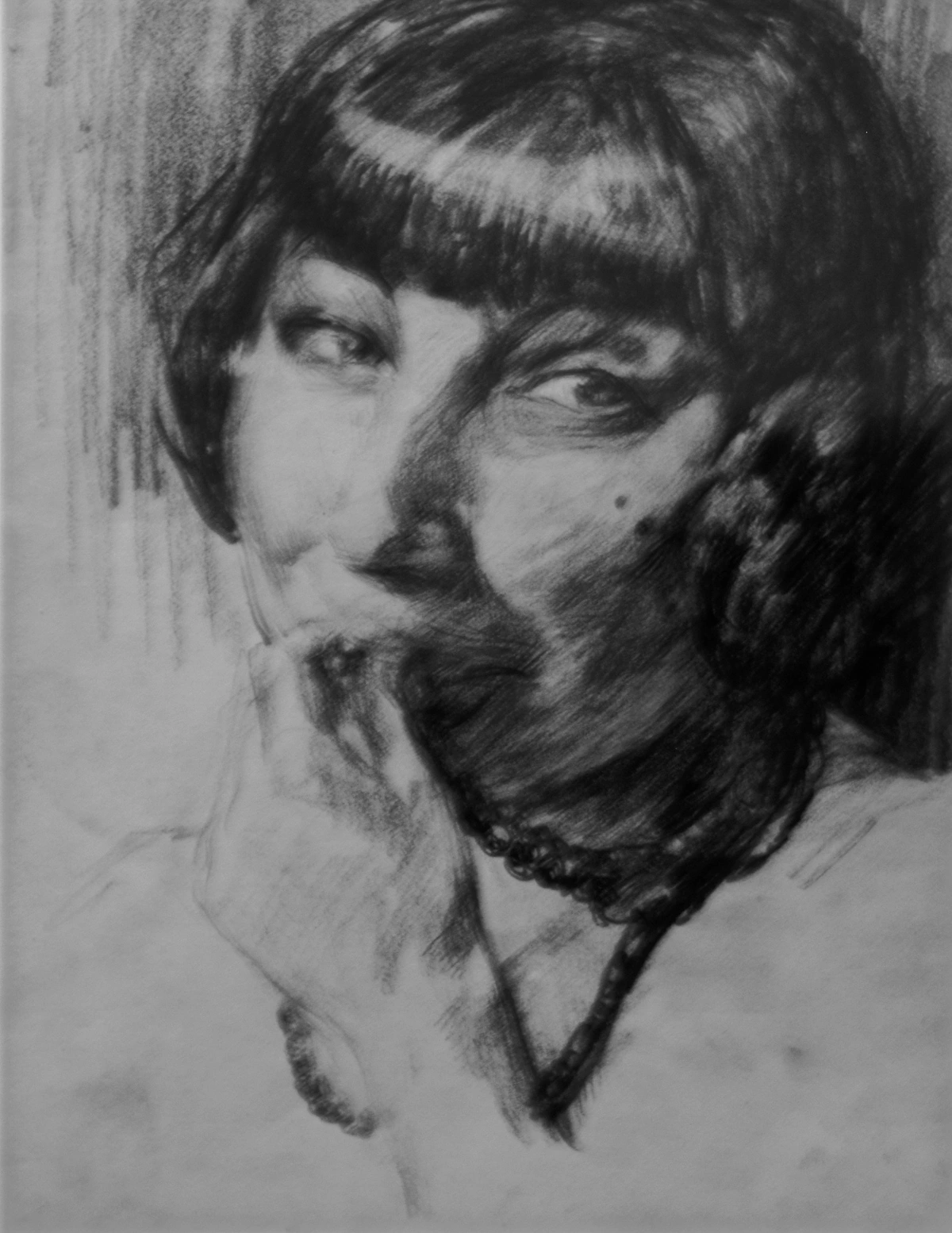
Sometimes, it’s about capturing a mood, a fleeting feeling that you recognize in someone else, but it could just as easily be a reflection of something within yourself. And that’s what I think Vermeer achieved so perfectly here. The "Girl" isn't just a model; she's a canvas for our own projections. This deliberate ambiguity is a stroke of genius, allowing her to speak to each viewer on a deeply personal level. Some intriguing theories even suggest she might have been one of Vermeer's daughters, Maria, or perhaps a family servant named Griet, a notion famously popularized by Tracy Chevalier’s historical novel Girl with a Pearl Earring. While pure speculation, these imagined identities only add to the rich tapestry of her enduring mystery. This blend of known artistic practice with enduring speculation is, for me, where art history truly comes alive, transforming a painting into a timeless narrative.

The Genius Behind the Brush: Johannes Vermeer
Ah, Johannes Vermeer – the man, the myth, the master of light. Born in Delft in 1632, Vermeer rose to become one of the most celebrated artists of the Dutch Golden Age, though he was largely overlooked for centuries after his death. Can you imagine? A genius like him, practically forgotten until the 19th century! It’s a thought that sometimes keeps me up at night: what other masterpieces are out there, waiting to be rediscovered? While details of his artistic training are scarce, it's widely believed he was apprenticed in Delft and likely influenced by the Utrecht Caravaggists, a group of Dutch painters who brought the dramatic chiaroscuro of Italian Baroque art to the Netherlands after studying with masters like Caravaggio. Vermeer’s life in Delft was modest; he lived and worked in the house of his mother-in-law, Maria Thins, who was a significant figure in his financial and personal life. Alongside his meticulous painting career, he managed an inn (The Mechelen) and worked as an art dealer, roles that undoubtedly ate into his studio time. He had a large family with his wife Catharina Bolnes (they had eleven children, ten of whom survived childhood!), and his painting income alone was likely insufficient to support them all – a testament to the slow, painstaking nature of his craft. He was also a prominent member of the prestigious Guild of Saint Luke, the painters' guild in Delft, serving as its dean multiple times. This role indicates his standing and respect among his peers, yet paradoxically, his output was incredibly small – only about 35-36 works are attributed to him today. Each one is a carefully crafted jewel, a glimpse into a serene, often domestic, world. His unparalleled focus on light, texture, and intimate moments is just breathtaking. If you're curious to dive deeper into his world, I've got a whole piece on the ultimate-guide-to-johannes-vermeer that you might enjoy. Or perhaps you'd like to journey further into the lives of other Dutch Masters, like the great Rembrandt van Rijn or even explore 5 Iconic Artworks of the Dutch Golden Age?
Initially, Vermeer's legacy was shrouded in obscurity after his passing. It wasn't until the 19th century, largely thanks to the impassioned advocacy of French art critic and historian Étienne-Joseph-Théophile Thoré-Bürger, that his genius was truly brought back into the light. Thoré-Bürger, almost single-handedly, pieced together Vermeer's fragmented oeuvre, identifying and championing his works, and ultimately securing his rightful place in the pantheon of art history. It's a powerful reminder that critical insight can reshape our understanding of artistic greatness.
Key Facts About Johannes Vermeer
Fact | Detail |
|---|---|
| Birth/Death | 1632 – 1675 |
| Hometown | Delft, Dutch Republic |
| Artistic Period | Dutch Golden Age (Baroque) |
| Known For | Masterful use of light, intimate genre scenes, tronies, luminous colors |
| Notable Works | The Girl with a Pearl Earring, The Milkmaid, View of Delft, The Art of Painting |
| Output | Approximately 35-36 surviving paintings |
| Profession | Painter, art dealer, innkeeper |
| Family | Married Catharina Bolnes, had 11 children |
| Rediscovery | Largely forgotten until the 19th century, championed by art critic Étienne-Joseph-Théophile Thoré-Bürger |
| Influences | Likely Caravaggio (via Utrecht Caravaggists like Gerrit van Honthorst and Dirck van Baburen), possibly Italian Renaissance masters such as Raphael or Titian, and contemporary Dutch genre painters |
| Technique | Impasto (thick application of paint), glazes (thin, translucent layers for luminosity), pointillé (small dots of paint for texture and light), presumed use of camera obscura for perspective and optical effects, meticulous preparatory studies, and distinctive color palette (notably expensive ultramarine blue) |
| Patronage | Primarily local patrons, including Pieter van Ruijven |
He wasn't like Rembrandt, pumping out hundreds of paintings with a vast workshop, or a flamboyant character like Salvador Dalí, courting controversy. No, Vermeer was quiet, meticulous, and focused, a true craftsman. His paintings often feature women in quiet contemplation, bathed in a soft, ethereal light that seems to come from another dimension – a signature style I find myself returning to for inspiration. Think of The Milkmaid or View of Delft – each a testament to his unparalleled skill in rendering domestic tranquility and urban landscapes with breathtaking precision and luminosity. It's this dedication to capturing serene, intimate moments that truly sets him apart, a quality that makes his limited oeuvre all the more precious.

It’s fascinating to consider how Vermeer's intimate genre scenes fit within the broader artistic landscape of the Dutch Golden Age. While he excelled at these quiet domestic moments, the era also saw a flourishing of other genres, like the grand still lifes that celebrated the material wealth and scientific curiosity of the time. Artists like Vermeer, through their meticulous observation and dedication to capturing the world around them, collectively shaped an incredibly rich and diverse artistic period that continues to influence us today.
Vermeer's Studio and Process: Precision, Light, and the Camera Obscura
One of the fascinating things about Vermeer is the sheer dedication and precision evident in his work. He wasn't a speed painter, that's for sure! His output was notoriously small, a fact that historians attribute to his painstaking methods and perhaps his dual role as an art dealer, which likely meant less time dedicated solely to painting. It's widely believed he utilized a camera obscura, an optical device that projected an image onto a surface, to achieve the stunning accuracy in perspective, the softened edges (often called bokeh in photography today), and the distinctive luminous quality in his paintings. This wasn't cheating, though; it was an innovative tool, an extension of his eye, allowing him to observe and translate light with an almost photographic exactitude, capturing minute details and subtle tonal shifts that were difficult to achieve freehand. The camera obscura, essentially a darkened room or box with a small hole or lens, projected an inverted image of the outside world onto an interior surface. For Vermeer, this would have offered a flattened, color-accurate 'preview' of his subject, aiding him in capturing the precise fall of light and spatial relationships that are so characteristic of his work. While the extent of its use is still debated, the optical effects in his work strongly suggest its regular incorporation into his studio practice. Modern studies, including the
It’s a process, isn’t it? The slow, deliberate creation. It’s a far cry from splashing paint on a huge canvas in a fit of inspiration, but both approaches have their own kind of magic. For Vermeer, this deliberate pace wasn't just a preference; it was a commitment to intellectual rigor, to truly seeing and translating the world with unprecedented precision. Every decision, from the placement of a highlight to the mixing of a hue, was a profound act of artistic will.

And I think that’s why his work feels so timeless – every brushstroke was considered, every shadow placed with intention. This meticulous attention to detail and process is something that deeply resonates with my own artistic explorations into color and form.
The careful selection of tools and materials is as much a part of the artistic journey as the act of painting itself. It's about understanding your medium and pushing its boundaries.
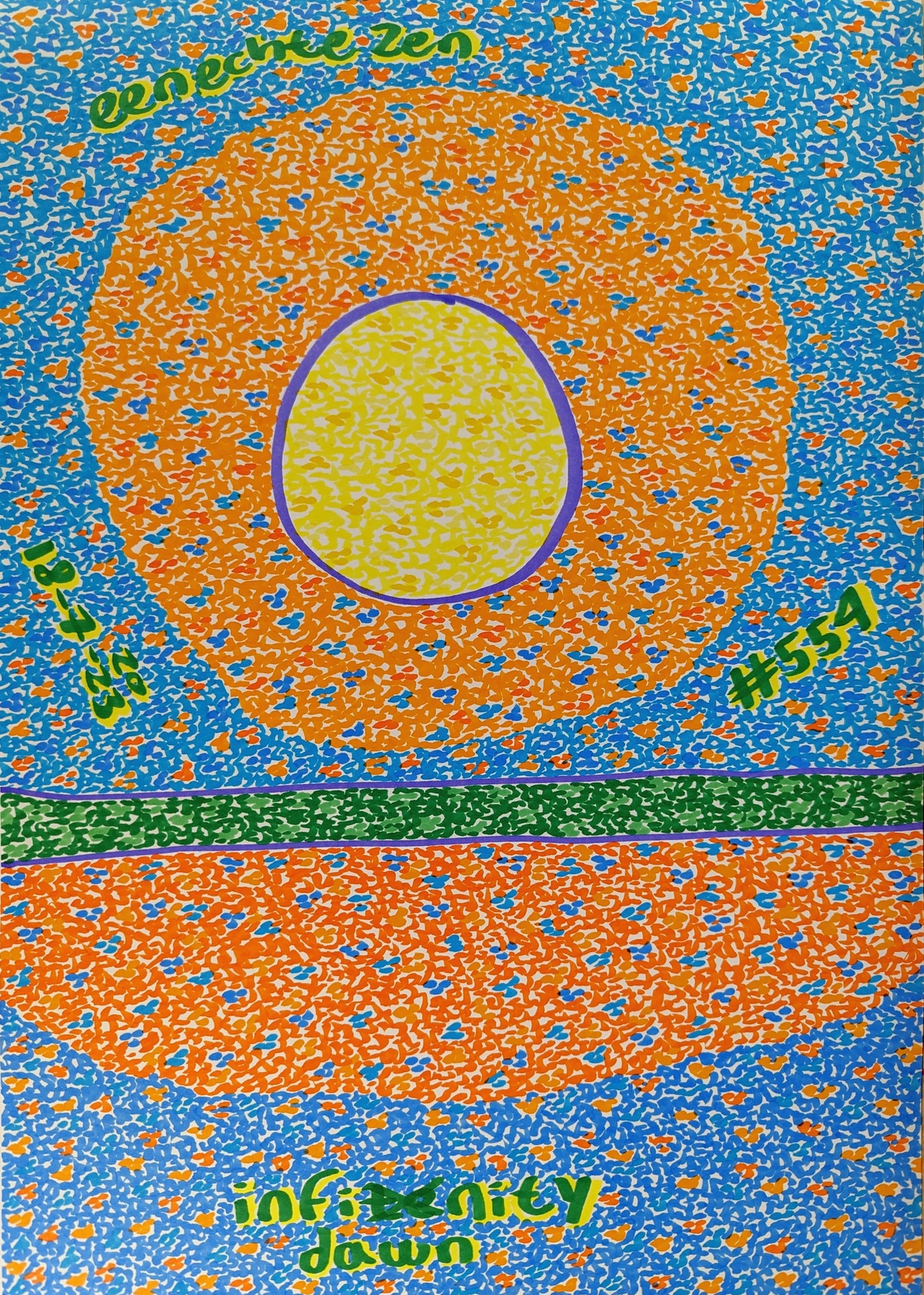
Artistic Context: The Dutch Golden Age and its Art Market
To truly appreciate The Girl with a Pearl Earring, we must place it within its vibrant historical moment: the Dutch Golden Age. This was a period of immense economic prosperity, scientific discovery, and cultural flourishing in the Netherlands, roughly spanning the 17th century. Following its hard-won independence from Spanish rule, the Dutch Republic experienced a 'Golden Age' fueled by global trade, innovation in shipbuilding, and a rapidly expanding merchant class. Unlike other European art centers where the Church or aristocracy were the primary patrons, the newly independent, predominantly Protestant Dutch Republic saw a burgeoning middle class and wealthy merchants driving the art market. This shift in patronage led to a demand for smaller, more intimate artworks that could adorn private homes, focusing on genres like portraits, still lifes, landscapes, and daily life scenes (genre paintings), reflecting the values and daily lives of the citizens themselves. Vermeer's work fits perfectly into this context, reflecting the quiet domesticity, observational realism, and understated wealth prized by his contemporaries. The artistic innovations of the time, driven by this unique market, allowed masters like Vermeer to experiment with light, perspective, and emotional nuance in ways that redefined painting, moving away from grand religious or mythological narratives towards the beauty of the everyday. It's a fascinating testament to how socio-economic forces can profoundly shape artistic movements, a connection I find endlessly intriguing in my own work. To learn more about this vibrant period, you might want to delve into 5 Iconic Artworks of the Dutch Golden Age.
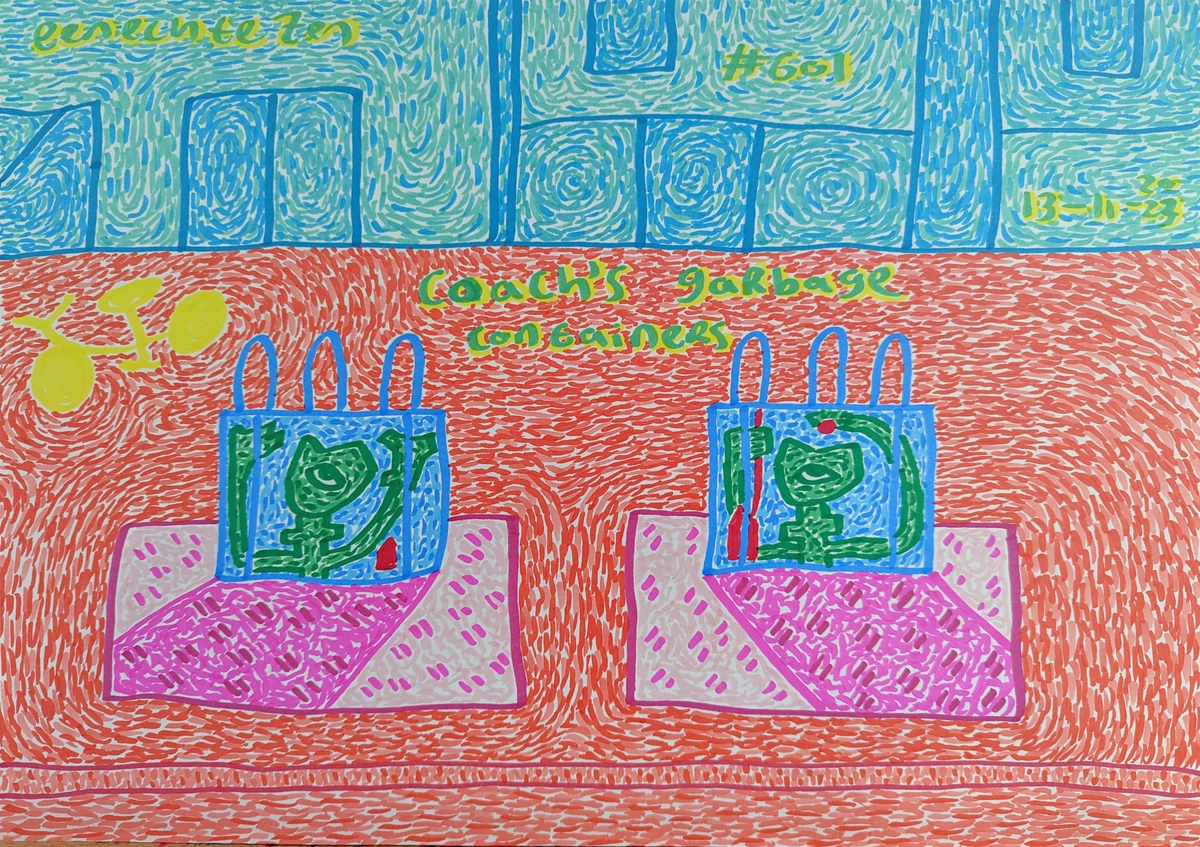
Unpacking the Masterpiece: Visual Analysis
Let's be honest, part of the magic is undeniably in the details, isn't it? When I stand before it, my eyes are always drawn to a few key elements that make this painting so utterly unforgettable. It's a masterclass in subtlety and profound visual impact, where every element contributes to the overall mystique.
The Turban: A Splash of the Exotic
That turban! The vibrant ultramarine blue and brilliant yellow-ochre fabric is so unexpected and yet perfectly complements her complexion. It's definitely not typical Dutch attire of the 17th century, suggesting an exotic, perhaps even theatrical, element. It frames her face beautifully, drawing our attention directly to her eyes and that slight parting of her lips. It's a fashion statement that transcends time, really. Art historians have debated the origin of this striking head covering – was it a real garment in Vermeer's possession, a prop he used for various models, or an imaginative flourish? Some suggest it might be a Turkish or Indian style, reflecting the increasing global trade and fascination with the 'Orient' during the Dutch Golden Age. This period, characterized by extensive maritime trade, brought a wealth of foreign goods, ideas, and fashions into the Netherlands, and artists often incorporated these elements to add intrigue, intellectual depth, or simply visual splendor to their works.
Whatever its true source, the turban is a masterstroke. It's not just a piece of clothing; it's a statement, a deliberate choice that injects an element of the exotic and timeless into the composition. It elevates the girl from a simple Dutch maiden to a figure of broader, more mysterious appeal, almost transcending her specific time and place. The use of such a distinct and non-Western garment also speaks to the broader cultural exchanges and global interests of the Dutch Golden Age, a period of immense mercantile power and curiosity about the wider world and its treasures. This bold choice in attire immediately sets her apart from more conventional portraits of the era.
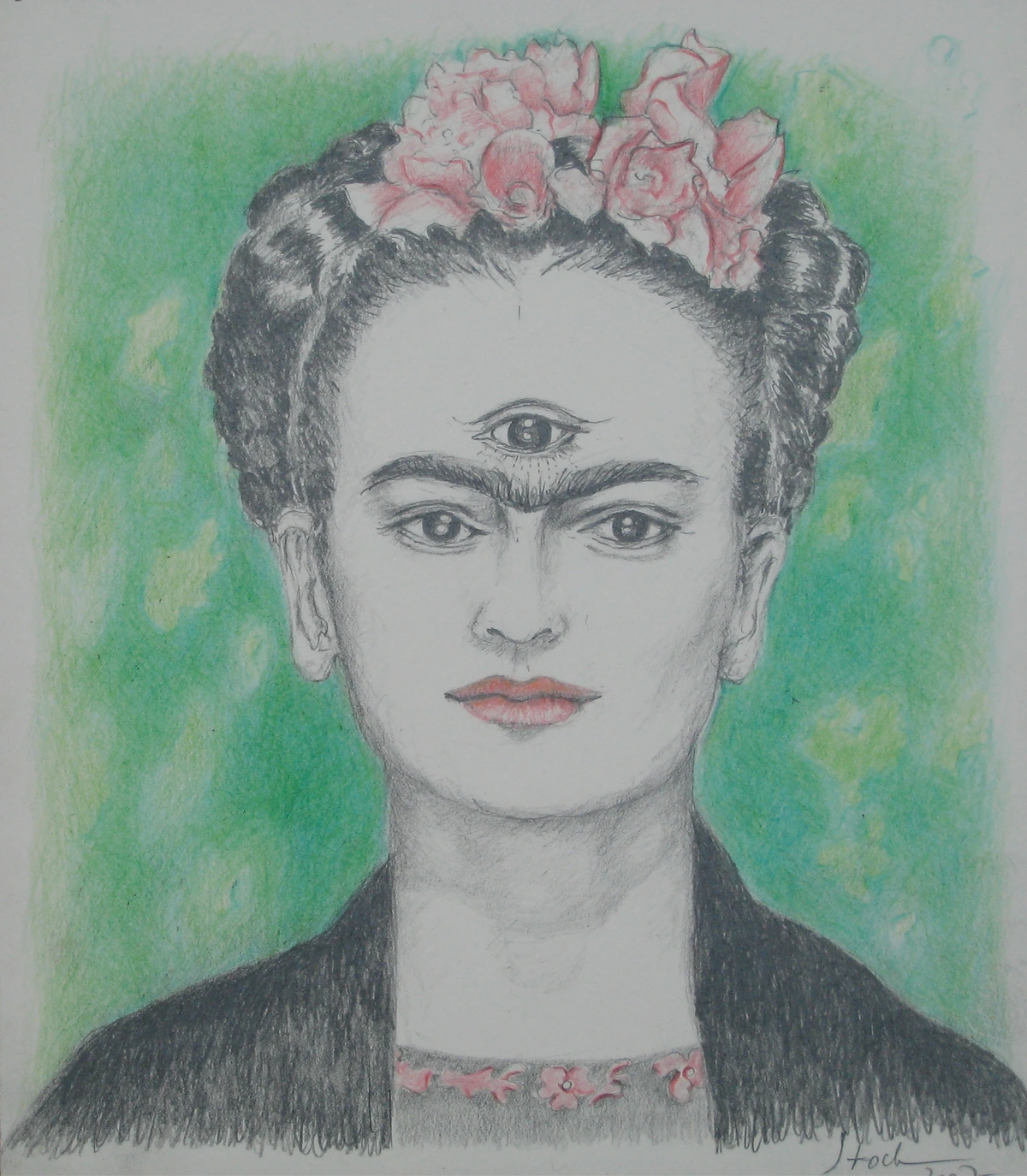
The Pearl: Luminosity and Illusion
And then there's the pearl. Oh, that pearl! It's enormous, isn't it? Almost impossibly so. It hangs from her ear, catching the light in a way that feels almost supernatural. There's been a lot of talk about whether such a large pearl would have been affordable for Vermeer, or even if it's painted with actual pearl pigment. My take? It doesn't matter. What matters is the incredible illusion of light, the way Vermeer captures its unique luster with just a few strokes of paint and clever use of reflections. It almost seems to glow from within, a testament to his unparalleled skill in rendering light. Indeed, the debate continues: some experts argue that a pearl of such magnitude would have been prohibitively expensive for Vermeer and his subjects, suggesting it might be an imitation glass pearl, a polished tin droplet, or even just a vivid invention of the artist's imagination. The sheer size and luminescence point away from a natural, perfectly spherical baroque pearl of that era. The brilliance lies not in its material value, but in Vermeer's uncanny ability to render its luminous quality with just a few dabs of white and grey paint, often employing a technique called pointillé – small, distinct dots of paint – to create the illusion of light reflecting off a surface. It's a masterclass in visual trickery, where the artist makes us believe in the presence of something precious through the sheer magic of paint. This optical illusion creates an undeniable focal point that pulls the viewer in and highlights the purity and innocence often associated with pearls in 17th-century symbolism, where they frequently represented modesty, chastity, or beauty.
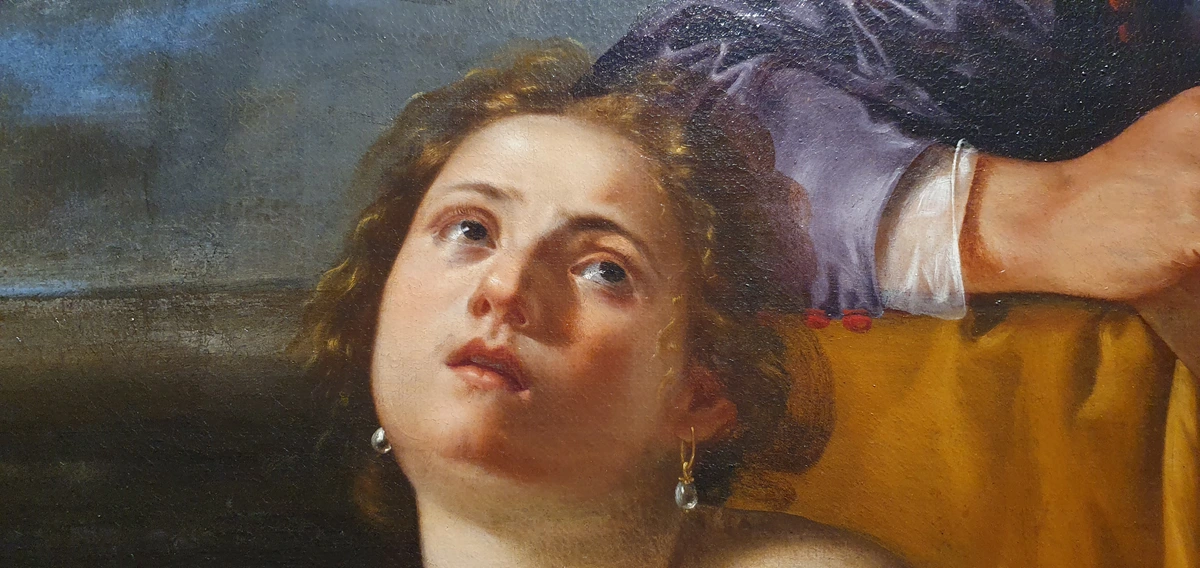
The fascination with pearls in art, particularly during the Baroque era, is something I find quite compelling. They symbolize purity, wealth, and sometimes, even vanity, serving as potent reminders of ephemeral beauty or moral allegory. Seeing how different artists approach this delicate gem tells you a lot about their artistic priorities, from meticulous realism to symbolic representation, as seen in the work of contemporaries like Artemisia Gentileschi.
Notice how the pearl in the Vermeer piece seems to absorb and reflect the light in such a unique way, almost as if it's generating its own light. It's a testament to his extraordinary observation skills and his ability to render texture and luminescence with such simple means, making it a focal point that is both visually stunning and rich in potential meaning.
The Clothing: A Hint of Opulence
Beyond the turban and the pearl, the girl’s simple yet rich yellow-ochre jacket, with its white collar visible, adds another layer to her character. While not as overtly luxurious as the pearl, the fabric's soft folds and subtle sheen suggest a certain level of prosperity or, at the very least, carefully chosen props from Vermeer's studio – perhaps a studio garment used for various tronies. Art historians often debate the material – likely a wool or silk blend, possibly even satin – but what's undeniable is Vermeer's mastery in rendering its texture and fall, contrasting beautifully with the smooth skin and the luminous pearl. He was a master at depicting various textures, from silk and satin to fur and wool, and here, the jacket feels tangible, a soft counterpoint to the sharp gleam of the pearl and the dark background. This choice of clothing, while seemingly modest, would have subtly conveyed a message of quiet prosperity and domestic virtue, reflecting the values of the burgeoning Dutch middle class. It’s a testament to his ability to bring even seemingly minor details to life, enriching the overall narrative of the painting and hinting at a quiet, understated opulence that aligns with Dutch domestic virtues of the era.
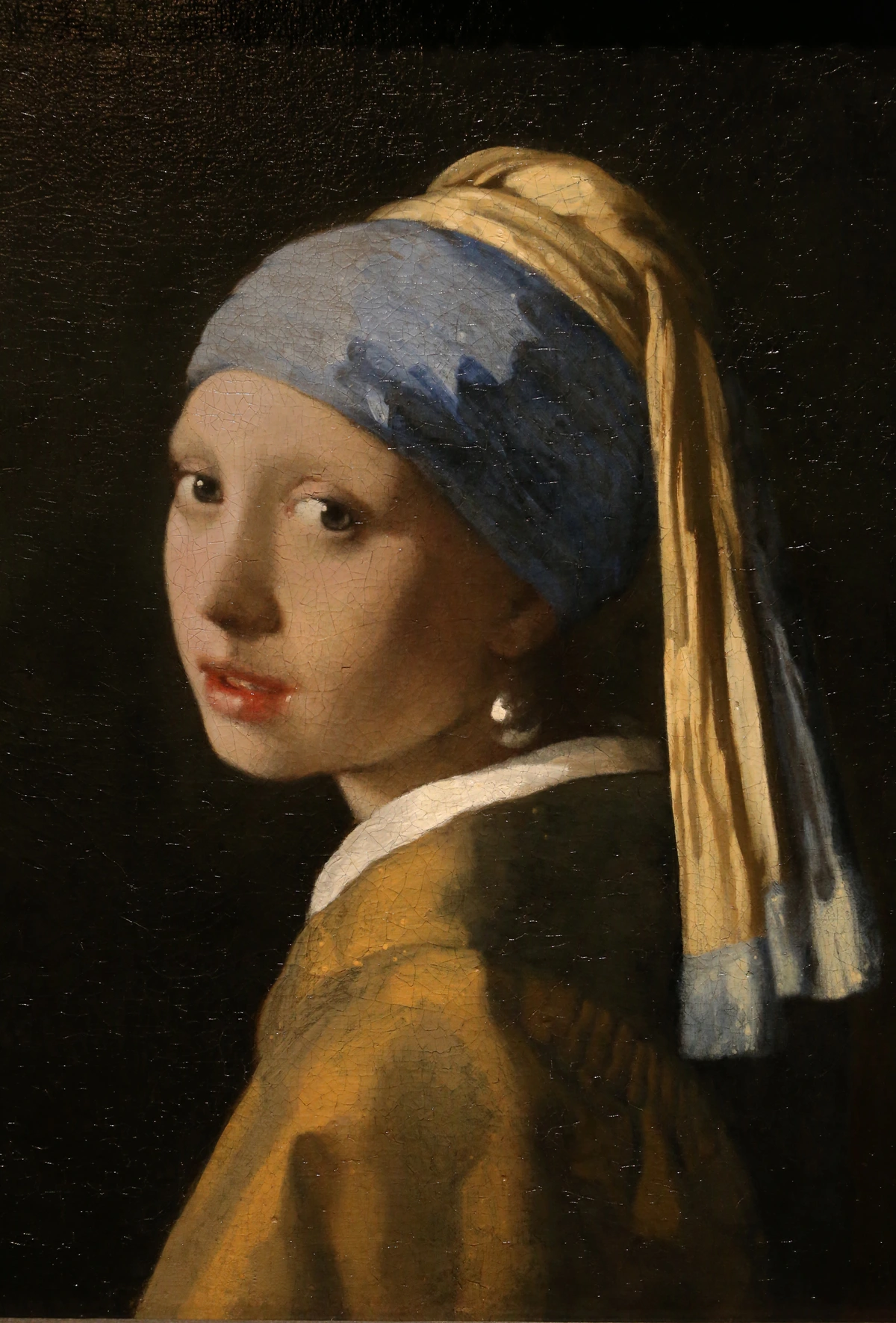
The Gaze: Enigma Incarnate
Her eyes. They're looking directly at you, aren't they? There's an intimacy, a directness that's both inviting and slightly unsettling. Is she surprised? Curious? About to speak? That ambiguous expression is what keeps us coming back, projecting our own thoughts and feelings onto her. It's a timeless trick, masterfully executed, creating a profound sense of connection that few other artworks achieve. This direct gaze is incredibly powerful. It breaks the fourth wall, so to speak, drawing the viewer into a personal, almost conspiratorial moment. Unlike the Mona Lisa's elusive smile that seems to follow you (though we'll compare them more directly later!), the Girl with a Pearl Earring meets your gaze head-on, demanding a response, a silent dialogue that transcends centuries. It’s a technique that many artists, including myself, strive for – that sense of immediate connection, that feeling of being seen, understood, or even questioned. It creates a psychological bond, a silent dialogue where the viewer becomes an active participant in the artwork, rather than a passive observer, making the experience deeply personal and unforgettable. It's a gaze that transcends the canvas, breaking the barrier between the painted world and our own, demanding a moment of shared humanity. This directness, almost a challenge, is what hooks you. And honestly, it’s why I find myself constantly returning to her.

This ability to capture and convey such a complex, direct human emotion through a mere painting is what elevates Vermeer's work to such a high echelon. It's a masterclass in subtlety and impact.
Chiaroscuro and Light: Vermeer's Signature
Vermeer was a wizard with light. He uses chiaroscuro – the strong contrast between light and dark – not just for dramatic effect but to sculpt her face, to make her almost emerge from the inky blackness behind her. Unlike the high drama of Caravaggio's chiaroscuro, which often uses stark contrasts for dramatic, theatrical effect and typically involves a much darker, more intense interplay of light and shadow, Vermeer’s approach is often more subtle, atmospheric, and focused on revealing form and texture through a delicate play of light. The way the light hits her cheek, her nose, and especially that pearl, is just phenomenal. It creates a sense of three-dimensionality that few artists could achieve. He masterfully manipulates light not just to illuminate, but to sculpt, defining contours and creating a soft, almost ethereal glow. It’s a kind of gentle chiaroscuro, a whispered drama rather than a shouted one.

This masterful control of light and shadow isn't just about realism; it's about creating mood, emphasizing form, and drawing the eye to precisely where Vermeer wanted it. He didn't just illuminate; he sculpted with light, making forms emerge from the deep, rich shadows with an almost palpable presence. This nuanced application of light and shade contributes significantly to the painting's emotional depth and its ability to engage the viewer so intimately. If you're fascinated by this powerful technique, a deeper dive into what is chiaroscuro in art history will reveal its rich legacy and varied applications across art movements, from the dramatic canvases of Caravaggio to the subtle intimacies of Vermeer.
The Dark Background: A Stage for Her Radiance
And let's not forget that plain, dark background. It's not just a backdrop; it's a deliberate choice that eliminates distractions and forces our entire focus onto her. It makes her luminosity, her colors, and her enigmatic presence truly pop. It’s like a minimalist stage setting for a captivating solo performance, stripping away all unnecessary context to amplify her presence. This seemingly simple background is actually a stroke of genius. It prevents any competing elements from diverting our attention, ensuring that the girl's face, her gaze, and that extraordinary pearl remain the undisputed stars of the show. There are no distracting details, no narrative clutter – just the profound presence of the girl herself, framed by the infinite depth of the dark. The dark background, initially thought to be simply black, has, in recent scientific investigations by the "Girl in the Spotlight" project, revealed traces of a deep green glaze over a dark ground, suggesting Vermeer originally intended a subtle atmospheric effect that has faded or discolored over centuries. It’s a trick I often employ in my own abstract works – sometimes, the absence of detail speaks volumes, allowing the viewer to fill in the blanks with their own emotions and interpretations, creating a deeply personal experience.
Art Historical Debates and Interpretations
Beyond the sheer visual appeal, a significant part of the painting's allure lies in the ongoing scholarly debates and interpretations it has inspired over centuries. Art historians have poured over every detail, utilizing advanced scientific analysis and archival research, seeking to unravel its mysteries. Was it a commissioned portrait, or a tronie meant for the open market? What about the identity of the model? Some theories suggest she could have been Vermeer's eldest daughter, Maria, or perhaps a household servant, even a fictional character like Griet. The question of whether she was a real person, a composite, or an ideal type continues to fuel academic discourse, keeping the painting perpetually fresh and engaging. Modern scientific investigations, employing advanced imaging techniques like macro-XRF scanning, infrared reflectography, and 3D digital microscopy, have allowed researchers to peer beneath the paint layers, revealing subtle underdrawings, compositional changes, and even the initial green hue of the background. These analyses offer a glimpse into Vermeer's creative process, showing that even a master made adjustments. Each theory adds another layer to the painting’s complex narrative, making it an endless source of fascination for experts and enthusiasts alike. For me, the beauty of art is that it doesn’t always have to provide definitive answers; sometimes, the questions themselves are the masterpiece. The very act of scholarly investigation and passionate debate keeps the artwork alive, breathing new meaning into it with each generation and ensuring its enduring relevance.
Key Art Historical Debates
Debate Area | Key Questions / Theories | Significance |
|---|---|---|
| Identity of the Model | Was she a real person (e.g., Vermeer's daughter Maria, servant Griet), or an idealized figure/tronie? The lack of definitive records keeps the mystery alive. | Fuels fascination, allows for universal projection, inspired popular fiction. |
| Purpose of the Painting | Was it a commissioned portrait (less likely given the "tronie" classification) or an independent character study intended for sale on the open market? | Sheds light on Vermeer's artistic intentions and the economic realities of his time. |
| The Pearl's Authenticity | Is the pearl depicted a genuine, costly natural pearl, or an imitation (glass, polished tin)? Its immense size makes a natural origin highly improbable for the era. | Highlights Vermeer's skill in rendering optical illusion over material fact, enhances mystique. |
| Use of Camera Obscura | How extensively did Vermeer use the camera obscura? Was it a tool for precise perspective and light, or did it define his entire artistic vision? Recent studies continue to refine our understanding of this. | Reveals his innovative approach to realism and optical effects, a blend of art and early science. It highlights his meticulous observation and desire for optical accuracy. |
| Symbolic Meaning | Beyond basic visual elements, what deeper meanings (vanitas, purity, fleeting beauty, human introspection) might Vermeer have intended or the viewer extract? The subtle details often hint at broader 17th-century Dutch cultural values. | Enhances intellectual engagement, allows for diverse interpretations across generations, making the painting perpetually relevant. |
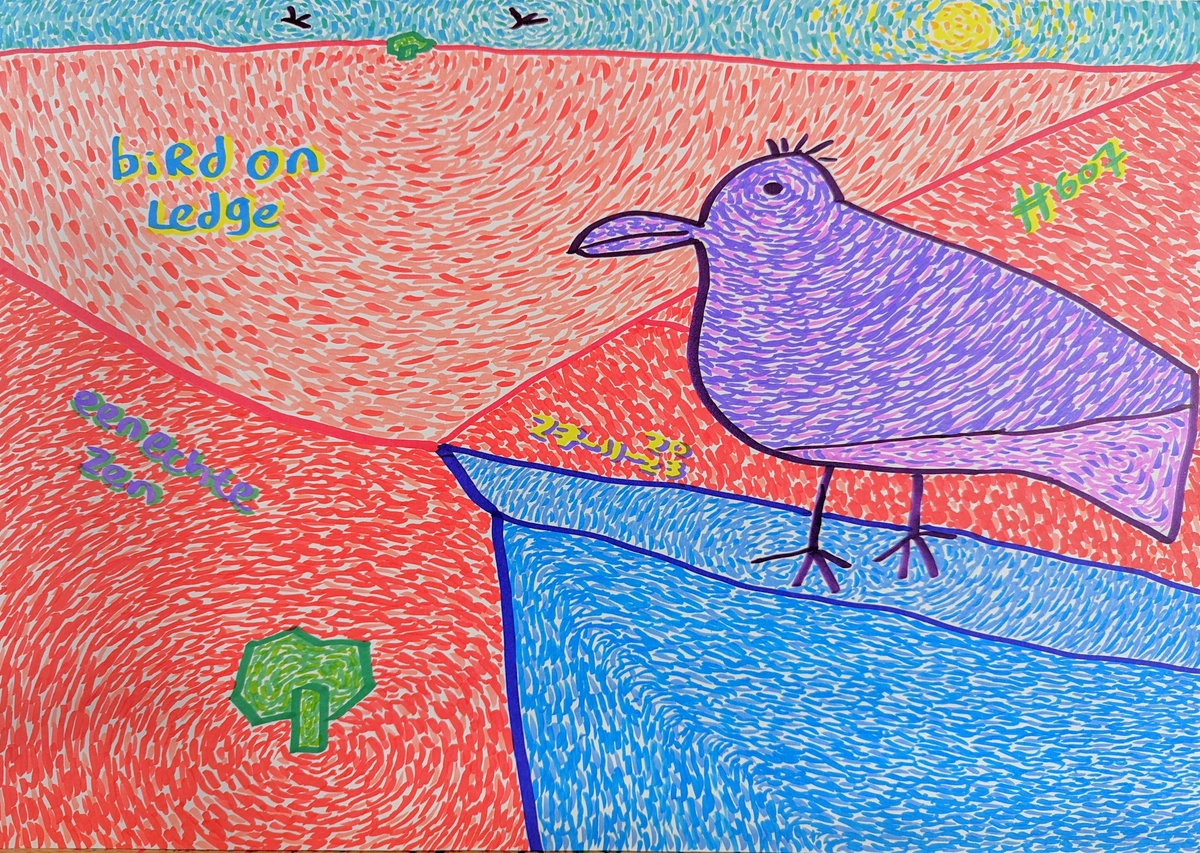
Symbolism and Meaning
While Vermeer rarely indulged in overt symbolism – he wasn't one for grand allegories or complex narratives like some of his contemporaries – many scholars have sought deeper meanings within The Girl with a Pearl Earring. The painting's elements lend themselves to interpretation, whether consciously intended by Vermeer or not, allowing for a rich tapestry of readings. The turban, as discussed, hints at exoticism and perhaps a subtle warning against vanity and earthly attachments, a common theme in vanitas paintings of the era which emphasized the transience of life and the fleeting nature of beauty. These vanitas themes, prevalent in Dutch Golden Age art, often served as moral reminders of the brevity of life and the futility of worldly possessions, a subtle counterpoint to the era's material wealth. The pearl itself, a rare and precious gem, often represented purity, innocence, or even fleeting beauty in 17th-century Dutch art, echoing concepts of modesty and domestic virtue. It's a poignant symbol, its delicate shimmer a stand-in for ephemeral beauty. The open mouth, a slightly parted lip, could imply a moment of speech interrupted, a sigh, or simply a breath, adding to the sense of intimacy and immediacy, almost as if she is about to confide a secret, or perhaps gasp in recognition – it's a breath caught in time, inviting us to imagine her thoughts. Even the stark, dark background, by stripping away context, can be seen as symbolizing the universal void against which individual human experience plays out, enhancing the contemplative nature of the piece and focusing all attention on her profound presence. These subtle symbolic undertones, whether intentional or not, contribute to the painting’s enduring power, allowing for multiple layers of interpretation that resonate across cultures and time, inviting each viewer to find their own meaning.
Why is it So Famous?
Beyond its sheer artistic brilliance, why has this painting captured the collective imagination so completely? I mean, it's often called the "Mona Lisa of the North" – high praise indeed, when you consider the competition from someone like Leonardo da Vinci.
Part of it, I think, is the profound mystery we've already discussed. Humans are drawn to unanswered questions, to stories untold, and her unknown identity, her ambiguous expression, the precise circumstances of her painting – it all fuels our curiosity and imaginative projections. Then there's the timeless beauty. It's a classic, but it doesn't feel dated, its aesthetic purity transcendent. The composition is strikingly simple yet profoundly impactful, focusing solely on the girl and her enigmatic presence, devoid of distracting narrative elements. The harmony of colors, the exquisite rendering of light, and the masterful texture all contribute to an image that feels both historically rooted and universally contemporary. The universal appeal of youth, beauty, and subtle emotion resonates across generations, making her face a mirror for our own feelings and reflections on human experience. It's a rare quality that allows a work of art to feel simultaneously ancient and utterly contemporary, speaking to something fundamental in the human psyche, regardless of cultural background or time period, a truly remarkable feat.
And let's be real, the book and subsequent movie adaptation played a huge, perhaps even unprecedented, role in catapulting it into global stardom. Suddenly, everyone wanted to know the girl. Tracy Chevalier's 1999 historical novel, Girl with a Pearl Earring, famously imagined a fictional backstory for the painting, portraying the model as a young servant in Vermeer's household, Griet. This compelling narrative, further popularized by the highly successful 2003 film adaptation starring Scarlett Johansson and Colin Firth, brought her story (even if fictionalized) to life for millions, making her accessible and relatable far beyond the traditional art world. This phenomenon underscores how fiction, when intertwined with history and mystery, can reignite interest in classical art, transforming a museum piece into a global cultural icon. It demonstrated how art can inspire new forms of storytelling, bridging the gap between historical masterpiece and contemporary popular culture, proving that a 17th-century painting could become a 21st-century sensation.

The Painting's Provenance and Journey
The journey of The Girl with a Pearl Earring to its current revered status at the Mauritshuis is a fascinating tale of obscurity, rediscovery, and a considerable amount of luck. For two centuries after Vermeer’s death, the painting was largely forgotten, with its creator often misidentified or ignored. It passed through various private collections, sometimes attributed to other artists, sometimes simply referred to as 'a tronie.' It was eventually rediscovered in 1881 by art collector A.A. des Tombe, who purchased it at an auction in The Hague for a mere two guilders and thirty cents (a paltry sum, roughly equivalent to less than a dollar today!), a price that vividly reflects its poor condition and the prevailing lack of appreciation for Vermeer's work at the time. This rather ignominious start, where a future masterpiece changed hands for a pittance, only adds to the mystique of its eventual rise to global fame. Imagine the dusty corners it might have occupied, the casual glances it received, utterly unaware of the reverence it would one day command. Des Tombe, a keen collector of Dutch Golden Age art, had the painting meticulously restored and, upon his death in 1902, bequeathed it and his entire collection to the Mauritshuis museum. This act secured its place as a public treasure, ensuring that future generations could marvel at its beauty. It’s a stark reminder that even the greatest masterpieces can begin their lives in quiet anonymity, waiting for the right moment and discerning eyes to bring them into the light.
Where Can You See Her?
If you want to experience her magic firsthand (and trust me, you absolutely do), you'll need to make a pilgrimage to the Mauritshuis museum in The Hague, Netherlands. She resides there, a true gem in a wonderful collection of Dutch Golden Age masterpieces, housed in a magnificent 17th-century palace. It's a remarkably intimate setting, allowing for a much closer connection than some of the grander, more sprawling museums. This historic building, once the residence of Count John Maurice of Nassau, provides a perfectly scaled and elegant backdrop for such a delicate and captivating work. Beyond the Girl, you’ll find other iconic Dutch masterpieces that offer a comprehensive journey through 17th-century Dutch art, including Vermeer's atmospheric View of Delft, Rembrandt's powerful The Anatomy Lesson of Dr. Nicolaes Tulp, and Carel Fabritius's enchanting The Goldfinch. It's a personal favorite, a place where you can really get lost in the art, feeling the weight of history and the enduring power of human creativity. The intimate scale of the museum allows for a truly immersive experience, far from the overwhelming grandiosity of some larger institutions. Seriously, it’s one of those museums that just feels right, not overwhelming, but utterly enriching, offering a deep dive into the artistic soul of a nation. Much like I love getting lost in the creation of my own pieces, you can always check out some of my contemporary art here. Or perhaps explore another incredible institution like the Den Bosch Museum.
The "Mona Lisa of the North" - A Comparison
It's a common comparison, and for good reason! Both paintings share an undeniable, almost hypnotic allure, but they achieve it through distinctly different means. While both are masterpieces that draw millions, their aesthetic and historical contexts diverge. Here's a quick rundown of their fascinating similarities and contrasts:
Feature | The Girl with a Pearl Earring (Vermeer) | Mona Lisa (Da Vinci) |
|---|---|---|
| Artist | Johannes Vermeer | Leonardo da Vinci |
| Origin | Dutch Golden Age (c. 1665) | Italian Renaissance (c. 1503-1519) |
| Artistic Movement | Baroque | High Renaissance |
| Medium | Oil on canvas | Oil on poplar panel |
| Size | 44.5 cm (17.5 in) x 39 cm (15 in) | 77 cm (30 in) x 53 cm (21 in) |
| Subject Identity | Unknown tronie, possibly a character study, a type rather than a specific individual | Lisa Gherardini, wife of Francesco del Giocondo, a known Florentine noblewoman |
| Gaze | Direct, intimate, looking over shoulder, breaking the fourth wall to engage the viewer immediately | Enigmatic, subtle, looking slightly past viewer, with the famous elusive smile that seems to follow you |
| Emotional Aura | Quiet intensity, contemplative, mysterious, inviting introspection and personal connection | Serene, elusive, captivating, often perceived as alluring or unsettling, with a sense of inner life |
| Mystery | Identity of the model, context of its creation, subtle expression, authenticity of the pearl | The famous smile, the inner thoughts of the sitter, the revolutionary sfumato technique, its psychological depth |
| Background | Plain, dark, minimalist, emphasizing the figure's luminosity and presence (originally a deep green curtain) | Elaborate, fantastical landscape with sfumato, creating a dreamlike, hazy atmosphere |
| Location | Mauritshuis, The Hague, Netherlands | Louvre Museum, Paris, France |
| Key Artistic Technique | Chiaroscuro (subtle), delicate rendering of light, impasto (for highlights), glazes, pointillé, presumed use of camera obscura | Sfumato (soft transitions between colors and tones), ethereal quality, aerial perspective, psychological depth |
| Mood/Emotion | Intimate, contemplative, direct, mysterious, evoking introspection and a sense of shared humanity | Serene, elusive, captivating, often perceived as alluring or unsettling, creating a complex emotional response |
| Cultural Impact | Elevated to global icon status in the 20th century, inspiring literature (Tracy Chevalier's novel), film, popular culture references, and countless modern reinterpretations. Her image is instantly recognizable worldwide, becoming a symbol of quiet beauty and enduring intrigue. | Widely considered the most famous painting in the world; its enigmatic smile, historical context, and ongoing academic study have made it a cultural touchstone for centuries, inspiring art, music, literature, and academic debate across all cultures. |
Restoration and Conservation Efforts
Like many old masterpieces, The Girl with a Pearl Earring has a rich history of conservation and restoration. It’s a constant balancing act for conservators: preserving the artist's original intent while protecting the artwork from the ravages of time and previous interventions. The painting has undergone several significant restorations throughout its life, most notably a major one in 1994, which revealed its vibrant colors and stunning contrasts beneath layers of old, yellowed varnish and accumulated grime. This restoration brought back much of the work's original luminosity, allowing us to see it closer to how Vermeer intended. More recently, in 2018, a comprehensive research and conservation project called "The Girl in the Spotlight" used a battery of advanced, non-invasive imaging techniques (such as macro-XRF scanning, infrared reflectography, 3D digital microscopy, and digital macrophotography) to uncover new insights into Vermeer's painting process, his meticulous application of pigments, and the subtle details of the girl's face and background. These groundbreaking investigations revealed, for example, the presence of subtle eyelashes around both eyes (long thought absent due to wear or discoloration) and minute changes in the composition, such as adjustments to the ear, the back of the neck, and the turban’s folds. Crucially, the research also confirmed that the background, which now appears almost uniformly dark, originally featured a deep green curtain, subtly rendered with glazes over a dark ground, proving Vermeer's deliberate choice for an atmospheric setting rather than a stark void. It’s a testament to human ingenuity and dedication, ensuring that future generations can experience the painting as close to its original glory as possible, while also deepening our scientific understanding of Vermeer's genius. As an artist, I find this work utterly fascinating – it’s like watching a detective story unfold, but with brushes and microscopes instead of magnifying glasses, revealing the secrets hidden in plain sight for centuries.
Cultural Impact and Modern Adaptations
Beyond its art historical significance and stunning beauty, The Girl with a Pearl Earring has cemented its place in global popular culture, inspiring a diverse array of modern adaptations and interpretations. From its starring role in Tracy Chevalier's novel and the subsequent film (which further fueled its recognition), to appearances in advertising campaigns, music videos, political cartoons, parodies, and even countless internet memes, the image of the enigmatic girl has become ubiquitous. Contemporary artists, photographers (like the famous 'Afghan Girl' portrait by Steve McCurry, often cited as a modern parallel to Vermeer's captivating gaze), and designers continue to draw inspiration from her striking presence, reinterpreting her gaze, turban, and pearl in countless creative ways. She’s become a symbol of quiet strength, timeless beauty, and enduring mystery, proving that a work of art from the 17th century can still resonate powerfully with a 21st-century audience. It's the ultimate compliment, really, when a piece transcends its original context and becomes a part of the collective consciousness, demonstrating art's boundless, cross-cultural influence.
My Personal Take: Why it Resonates
For me, The Girl with a Pearl Earring is more than just a historical artifact or a pretty picture. It's a powerful reminder of how art can transcend its time and speak to us directly, intimately. There’s something about her vulnerability, her quiet confidence, and that almost-smile that feels incredibly human. It reminds me that even in the chaos and clamor of modern life, there are moments of profound stillness, moments where we connect with something deeper within ourselves or with another soul, moments of pure presence. That's a feeling I constantly try to capture in my own abstract and colorful works – that sense of raw emotion, of a silent story waiting to be told, a universal truth revealed in a fleeting gesture. It's about finding the universal in the unique, much like Vermeer did with this singular tronie. She embodies that timeless connection that I strive for in my own artistic language, a moment of deep, shared understanding.
Frequently Asked Questions (FAQ)
These are the kinds of questions I often get when I’m talking about this masterpiece, and I love digging into them because each answer reveals another fascinating facet of its brilliance, deepening our appreciation for Vermeer's genius and the painting's enduring appeal.
What is the painting's style/movement?
The Girl with a Pearl Earring is a quintessential example of Dutch Golden Age painting, firmly placing it within the broader Baroque artistic movement of the 17th century. However, Vermeer's specific style, characterized by its quiet intimacy, masterful rendering of light, and focus on domestic scenes and character studies (tronies), sets him apart from the more dramatic and theatrical elements often associated with Italian or Flemish Baroque. His work blends realism with an almost ethereal quality, making his contribution unique within the period.
Who painted The Girl with a Pearl Earring?
Johannes Vermeer, a Dutch painter from the 17th century, is the celebrated artist behind The Girl with a Pearl Earring. He's known for his exquisite use of light and his intimate genre scenes and portraits during the Dutch Golden Age. Though he received little recognition during his lifetime, his meticulous technique and profound ability to capture serene moments have since earned him a place among the greatest painters in history.
What makes the Girl with a Pearl Earring so special?
Its specialness lies in several factors: the enigmatic gaze of the subject that seems to follow you, her unknown identity (believed to be a tronie, a character study rather than a portrait) which allows for universal projection, Vermeer's masterful use of light and shadow (chiaroscuro) that creates stunning three-dimensionality, the striking contrast of her exotic blue and yellow turban, and the brilliant luminosity of the pearl itself, rendered with deceptive simplicity. It radiates a sense of timeless mystery and beauty, inviting endless contemplation.
What is the background of the painting?
The background of The Girl with a Pearl Earring is a plain, dark, almost abstract void. Originally, scientific investigations have confirmed it was likely painted with a deep green glaze over black, but over centuries, the green pigment has faded or discolored, resulting in the almost uniformly dark appearance we see today. This minimalist background is a deliberate artistic choice by Vermeer to eliminate distractions, creating a powerful contrast that forces the viewer's entire focus onto the girl's luminous face, her exotic turban, and the sparkling pearl. It enhances the sense of intimacy and timelessness, making her figure emerge dramatically from the shadows, almost like a vision.
Is the pearl real?
While the pearl is undoubtedly the painting's namesake and a striking feature, art historians often debate its authenticity. Given its immense size and the cost of such a pearl in the 17th century – natural pearls of that scale were extraordinarily rare and expensive, reserved for royalty and the ultra-wealthy – it's highly probable that Vermeer either exaggerated its scale, used a faux pearl made of polished glass, or perhaps even a polished tin-like ornament. What's truly 'real' is Vermeer's astonishing ability to capture its luster with just a few strokes of paint, creating an illusion of light and texture that transcends its physical representation.
What colors are used in the painting?
Vermeer is celebrated for his distinctive use of color, and The Girl with a Pearl Earring is a prime example. The most prominent colors are the rich ultramarine blue and brilliant yellow-ochre of her turban, which create a striking contrast. Her jacket is a soft yellow-ochre, complemented by a white collar. Her skin tones are rendered with delicate pinks and subtle greys, while the pearl itself shines with whites, greys, and hints of light reflections. The background, though appearing dark, originally contained deep greens. Vermeer's mastery lies in his ability to make these colors vibrate with light and depth, creating a harmonious and captivating palette.
Where is The Girl with a Pearl Earring located?
Today, The Girl with a Pearl Earring proudly resides in the Mauritshuis museum in The Hague, Netherlands. It is the museum’s most famous artwork and a primary attraction there, drawing visitors from all over the world to witness its breathtaking beauty firsthand. This intimate setting allows for a truly personal, almost one-on-one, encounter with the masterpiece, a quiet conversation across centuries.
What techniques did Vermeer use?
Vermeer employed a masterful array of techniques to achieve the unique luminosity and realism in his works. These include a subtle form of chiaroscuro for dramatic light and shadow, impasto (thick paint application) for highlights and texture, particularly evident in the pearl, and glazes (thin, translucent layers of paint) to build up rich, vibrant colors and create an ethereal, almost glowing finish. He also notably used pointillé, tiny, distinct dots of light-colored paint, to simulate light reflecting off surfaces and to capture the dazzling qualities of light itself. Furthermore, it's widely believed he utilized a camera obscura to achieve precise perspective and optical effects, contributing to the almost photographic quality and softened edges of his compositions. These techniques, combined with his painstaking attention to detail, allowed him to create a world of unparalleled beauty and realism.
What does The Girl with a Pearl Earring symbolize?
While Vermeer was not known for overt symbolism, many scholars interpret elements of The Girl with a Pearl Earring as carrying deeper meanings. The exotic turban can hint at global trade and curiosity, or even a subtle vanitas warning against vanity and worldly goods. The luminous pearl often symbolizes purity, innocence, or transient beauty in 17th-century Dutch art. Her direct, enigmatic gaze and slightly parted lips can suggest a moment of interrupted speech or a confidential secret, inviting personal connection and introspection. Ultimately, the painting's subtle ambiguities allow for a rich tapestry of personal interpretations, making its symbolism fluid and enduring.
What is the historical context of the painting?
The Girl with a Pearl Earring was created during the Dutch Golden Age (roughly the 17th century), a period of immense economic prosperity, scientific advancement, and cultural flourishing in the Netherlands. Unlike other European art centers, the Dutch art market was driven by a burgeoning middle class and wealthy merchants, leading to a demand for smaller, more intimate genre paintings, portraits, and still lifes for private homes. Vermeer's work fits perfectly into this context, reflecting the quiet domesticity and observational realism prized by his contemporaries. It's a product of a unique socio-economic environment that fostered artistic innovation and a distinct aesthetic.
How old was the girl in the painting?
Her exact age is unknown, as her identity remains a mystery. Based on her youthful features, she is generally believed to be a young woman, perhaps in her late teens or early twenties. However, since the painting is considered a tronie – a character study rather than a commissioned portrait of a specific individual – her precise age or identity is less crucial than the enigmatic expression and universal appeal Vermeer captured.
What is the size of The Girl with a Pearl Earring?
The painting is relatively small, measuring approximately 44.5 centimeters (17.5 inches) high and 39 centimeters (15 inches) wide. Its modest size contributes to the intimate and personal feeling it evokes, inviting viewers to lean in and connect with the subject on a close level. It's a reminder that immense power can come in a small package.
Has The Girl with a Pearl Earring undergone restoration?
Yes, the painting has undergone several restorations throughout its history. A major conservation effort in 1994 revealed much of its original vibrancy, removing yellowed varnish and grime. More recently, in 2018, the Mauritshuis launched the "Girl in the Spotlight" research project, using advanced non-invasive imaging techniques to study Vermeer's materials and methods without altering the painting. These ongoing efforts ensure the masterpiece is preserved for future generations.
When was The Girl with a Pearl Earring painted?
The Girl with a Pearl Earring was painted around c. 1665. This places it firmly within the flourishing period of the Dutch Golden Age, a time of great artistic and cultural prosperity in the Netherlands, characterized by significant advancements in science, trade, and the arts. This mid-17th century period saw Vermeer at the height of his powers, creating some of his most iconic and revered works.
Conclusion
So, there you have it – my attempt to unravel some of the magic behind The Girl with a Pearl Earring. She's a painting that teaches us about the power of subtle glances, the exquisite interplay of light, and the enduring allure of a well-kept secret. She reminds me why I fell in love with art in the first place: its profound ability to capture something profoundly human, something that resonates with us centuries later, transcending time and cultural barriers. It's that delicate balance between the known and the unknown, the seen and the unseen, that I constantly explore in my own work, striving for a similar depth of connection. Next time you see her, online or (ideally) in person, take a moment. Let her speak to you. You might be surprised at what she has to say, what feelings she stirs within you. And hey, if you're ever looking for a different kind of visual conversation, a dive into the abstract emotions and vibrant colors that I try to conjure, you know where to find me and my art here. Perhaps you'll find your own silent conversation, your own moment of profound stillness, waiting to be discovered. After all, isn't that what art is all about? The eternal conversation between artist, artwork, and observer.





